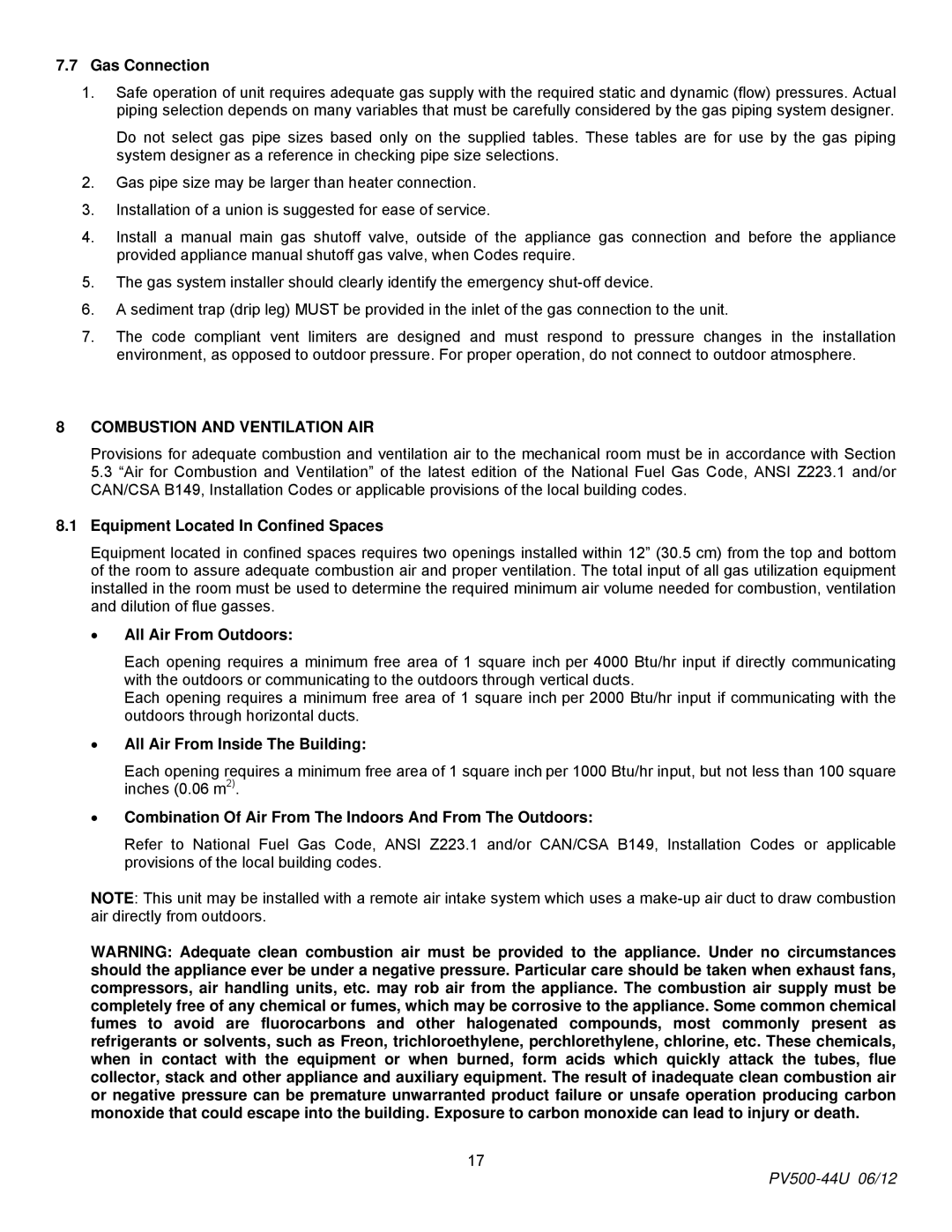PV500-44U specifications
PVI Industries is a well-established name in the manufacturing of innovative water heating solutions, and one of its standout products is the PV500-44U. This commercial water heater is specifically designed to meet the demands of medium to large-scale facilities, ensuring efficient and reliable hot water delivery.The PV500-44U is a high-capacity, gas-fired water heater, offering a remarkable output of up to 500,000 BTU per hour. This impressive capacity makes it suitable for a variety of applications, including hospitality, healthcare, and industrial washing. With such power, it provides continuous hot water, which is vital in settings that require consistent hot water availability.
One of the key features of the PV500-44U is its robust construction. The unit is designed with high-quality stainless steel, which provides durability and resistance against corrosion. This is crucial for maintaining long-term reliability, especially in environments where water quality may vary. Additionally, the water heater utilizes a sophisticated insulation system that minimizes heat loss, ensuring that energy consumption remains efficient.
The PV500-44U incorporates advanced technologies aimed at enhancing performance and user control. It features a state-of-the-art digital control system that allows for precise temperature settings and monitoring. This system not only ensures optimal performance but also enhances safety by providing alerts for any operational anomalies.
Another notable characteristic of the PV500-44U is its eco-friendly design. It is engineered to meet the latest environmental regulations, which helps reduce carbon emissions and energy consumption. The unit’s high thermal efficiency contributes to lower operating costs, making it an economical choice for businesses looking to manage their energy expenses effectively.
In terms of maintenance, the PV500-44U offers user-friendly access to components, simplifying routine servicing and repair tasks. This thoughtfully designed structure helps extend the lifespan of the unit and minimize downtime, which is critical for maintaining hot water availability in commercial settings.
Overall, the PVI Industries PV500-44U stands out as a reliable and efficient water heating solution that effectively meets the high demands of commercial applications. Its combination of powerful output, robust construction, advanced technology, and eco-friendly features makes it a premium choice for businesses seeking quality and efficiency in their hot water systems.
